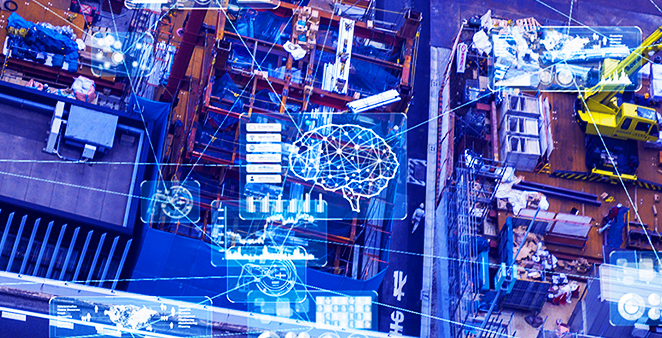In my previous blog, I focused on answering the question, “What is artificial intelligence?” and discussed the “Constellation of AI” paradigm to understand the why-what-how structure of an enterprise AI program. In this installment of the blog series, I will further distinguish the various methods of machine learning to help understand when each of these techniques can be applied.
Different Ways a Machine can Learn
Machine learning lies at the core of AI systems. The capability of this technology to learn from raw data powers the everyday applications of AI that are becoming ever more prevalent.
In a recent discussion with Ary Bressane, director of data science at Aspen Technology, we attempted to capture the most relatable definition of machine learning. This simple statement by Prof. Pedro Domingos of the University of Washington probably conveys it best: “Machine learning algorithms can figure out how to perform important tasks by generalizing from examples.”
An AI’s ability to learn is fundamental. And when the best Industrial AI systems are set to the task of learning for themselves, the results can dramatically improve business performance. What makes machine learning very powerful and effective in today’s industrial context is its ability to:
-
Learn and improve over time
-
Identify patterns in very large amounts of data, quickly
-
Extract features from structured data (spreadsheets, time series) and unstructured data (text, images, videos)
As such, machine learning technology scales very well and has become a critical pillar in enabling data-driven digital transformation for global enterprises today.
This leads to the question, “What are the different ways a machine can learn?” One of the real strengths of machine learning is that there are different types of learning algorithms which can be used, including supervised, unsupervised and reinforcement. Let’s take a look at each type.
Supervised Learning
This type of algorithm uses training data and feedback from humans — the data has been organized and described — to learn the relationship of given inputs to a given output.
You will use this method if you know how to classify the input data and the type of behavior you want to predict, but you need the algorithm to calculate it for you on new data. So, for example, you might show the algorithm a large number of labeled failures from industrial asset data, and it would then learn how to recognize a “failure event” and spot one in a completely different dataset from the asset.
Unsupervised Learning
This kind of algorithm explores input data without being given an explicit output variable — it requires no predefined labels in the data. This method is applicable if you don’t know how to classify the data, and you want the algorithm to find patterns and classify the data for you.
As an example, you might show the algorithm a large unlabeled dataset from critical equipment containing both anomalous and normal operating behavior. The algorithm would sort the data with similar characteristics into different groups without knowing that one contained “anomalies” and the other was “normal.”
Reinforcement Learning
This algorithm learns to perform a task simply by trying to maximize rewards it receives for its actions — that is, it works by trial and error, using a feedback loop of “rewards” and “punishments.” You would use this method if you don’t have a lot of training data, you cannot clearly define the ideal end state or the only way to learn about the environment is to interact with it.
This figure created by Cognub illustrates the various techniques and applications for each of the machine learning methods discussed above:
This baseline is now well-understood and prevalent in many everyday applications. And, with machine learning methods and tools getting rapidly democratized and AI steadily becoming a mainstream technology, many traditional asset-intensive industries are investing heavily to spearhead an AI-driven digital transformation.
The key to making it work in real-world applications is getting the learning right — and more importantly, making it valuable and actionable in a business context. This is where we get to the paradigm of Industrial-Strength AI, which combines data science and AI with software and domain knowledge, to deliver comprehensive business outcomes for specific business needs within capital-intensive industries.
That’s where the true value potential is realized — when enterprises are able to apply AI to gain measurable business outcomes. We’ll explore Industrial-Strength AI and its top use cases for asset-intensive industries in our next blog post!
And if you’d like to see how next-generation digital solutions can unlock new levels of performance for your business, please read our recent executive brief, Next-Generation Operational Technologies Enable the Smart Enterprise in a Changing World.



Leave A Comment